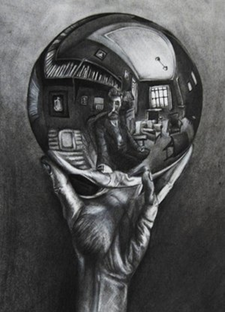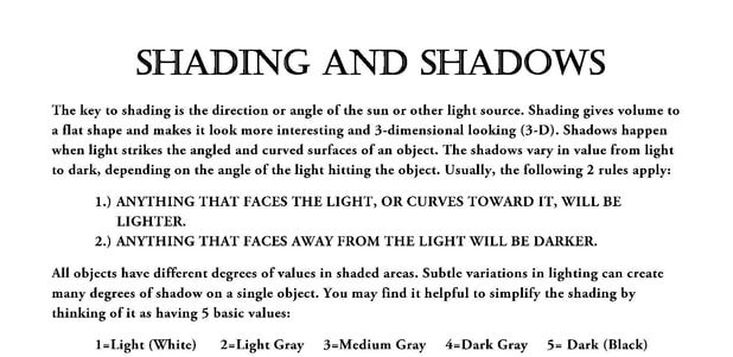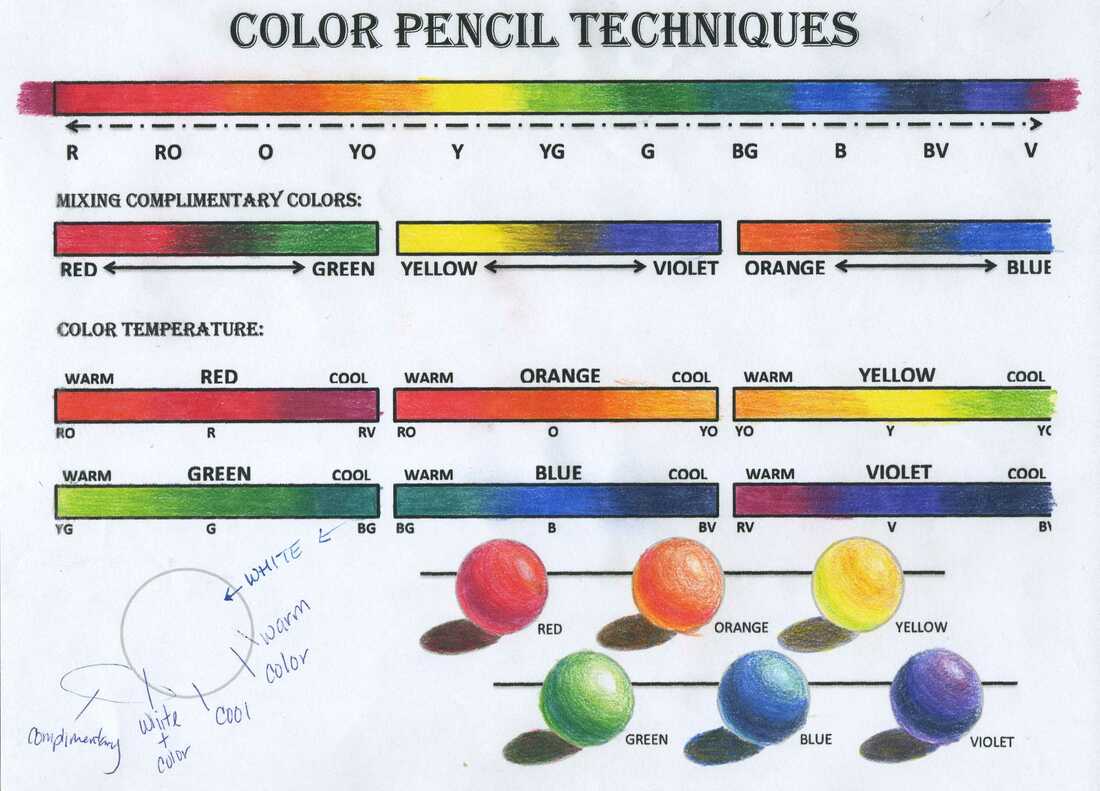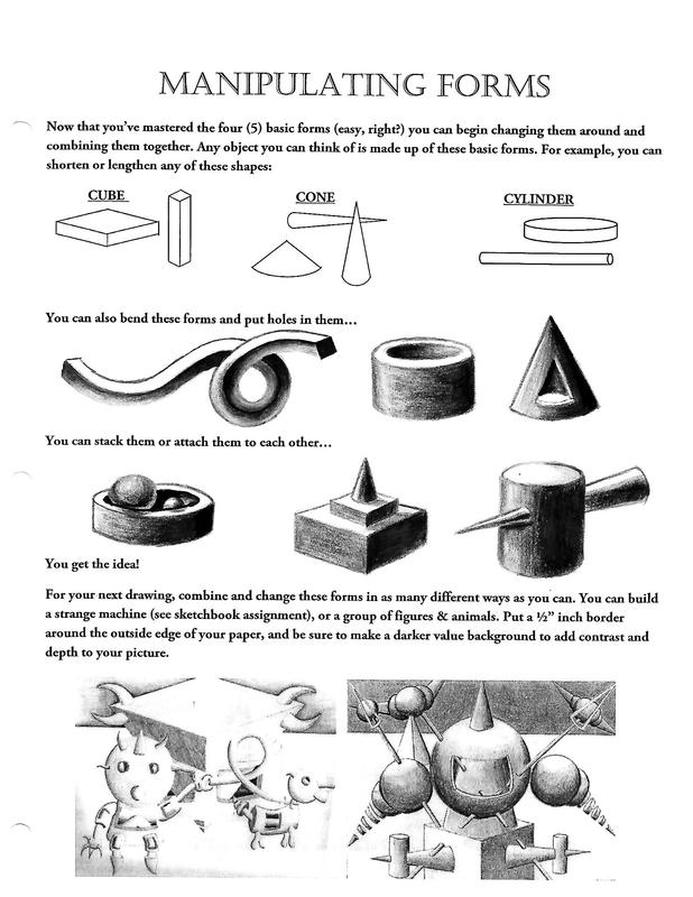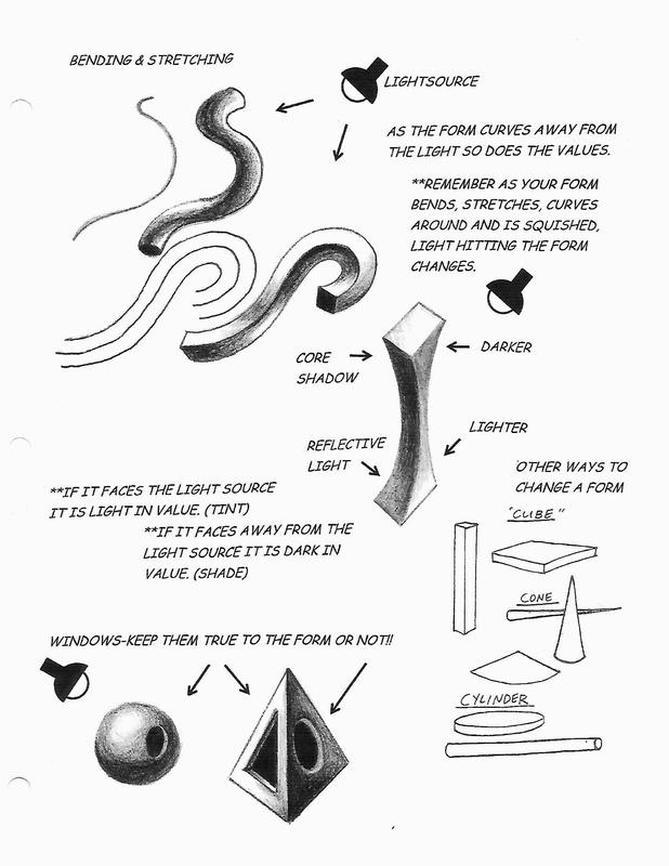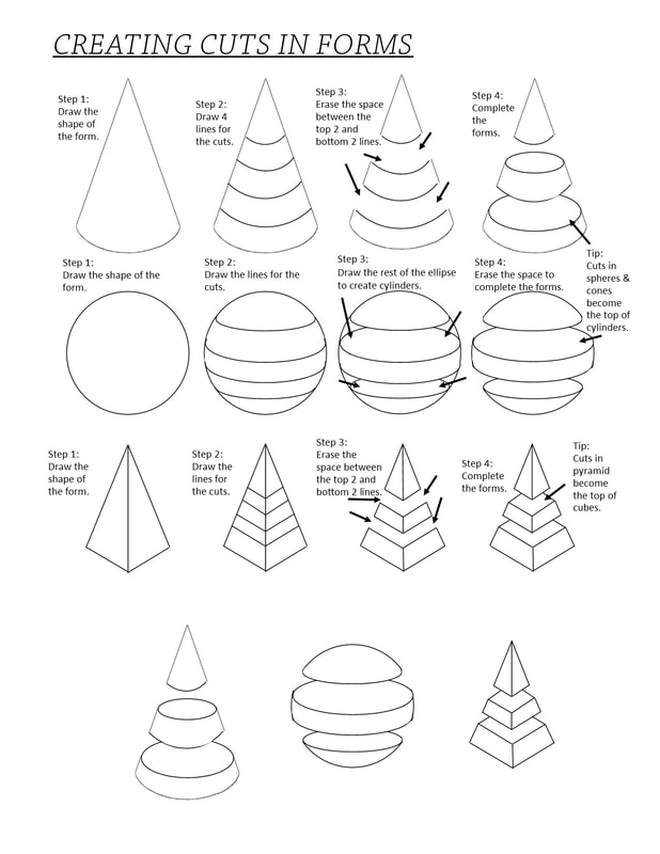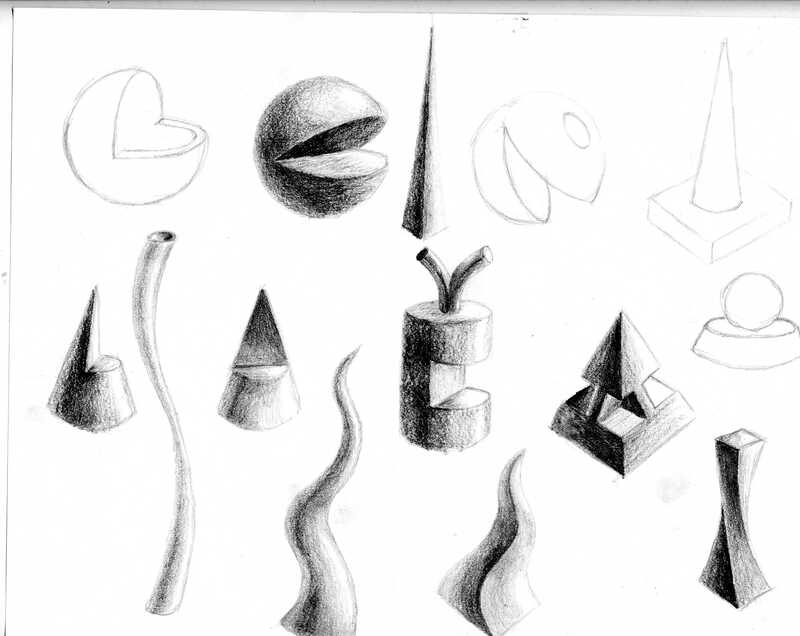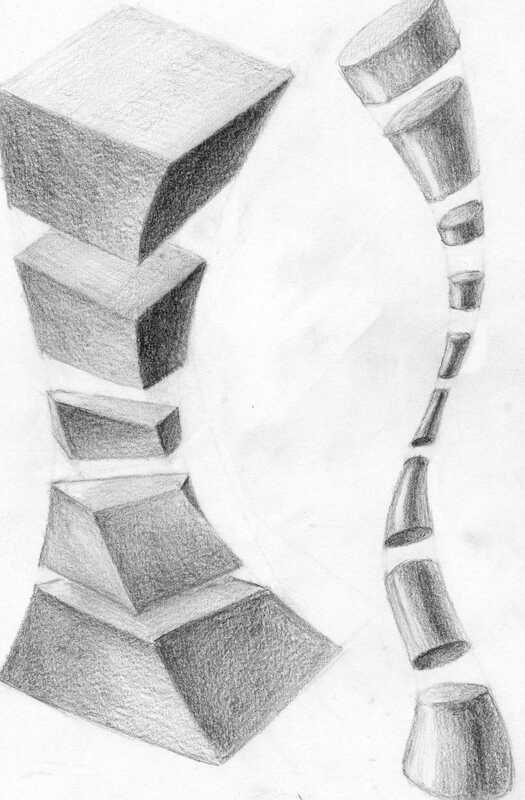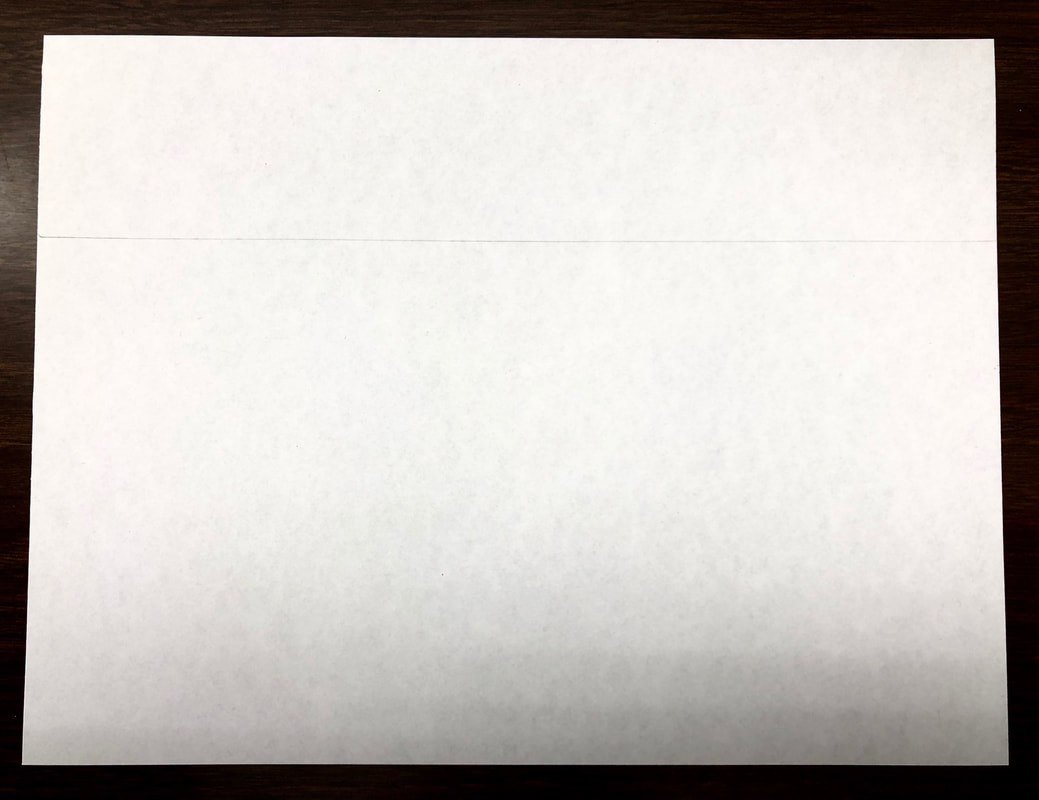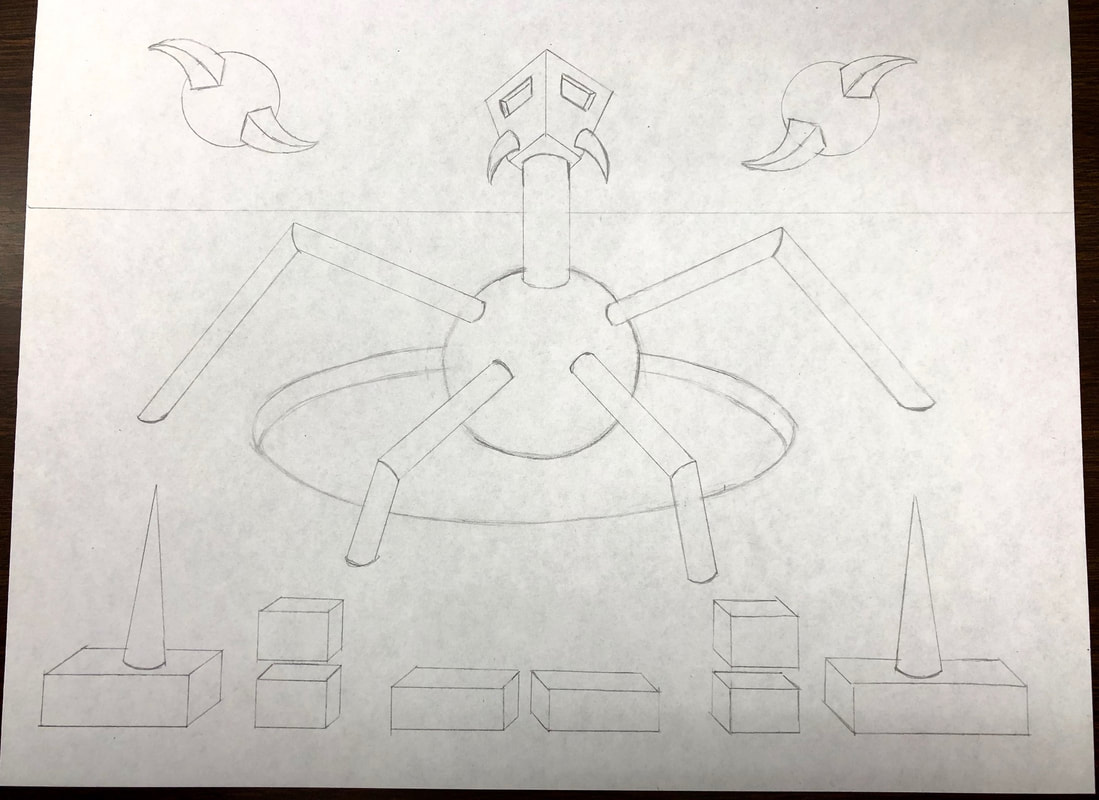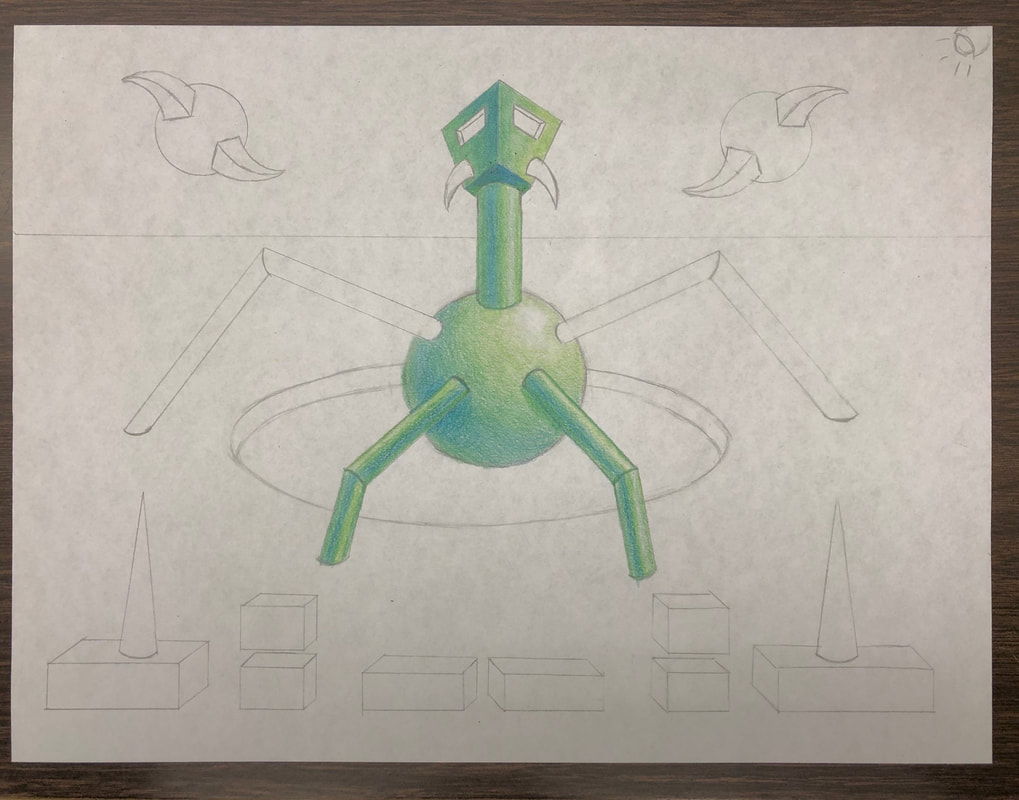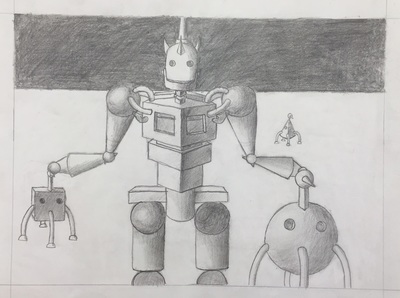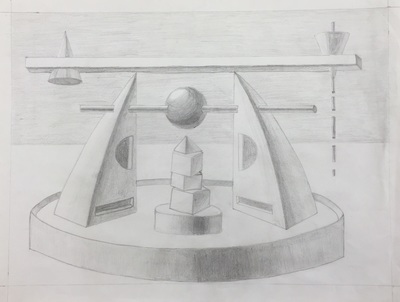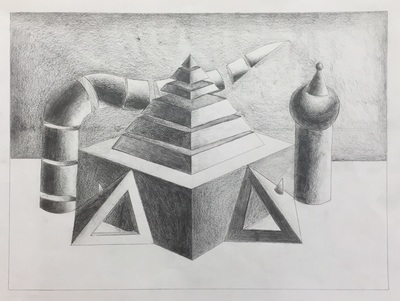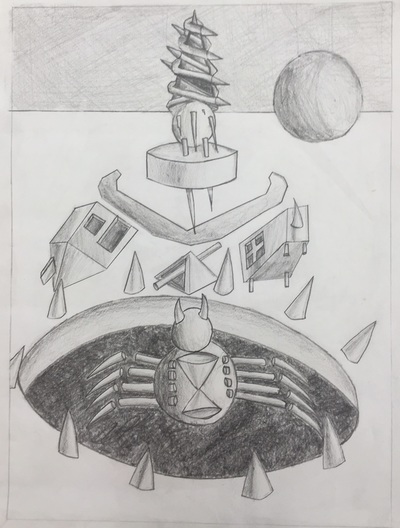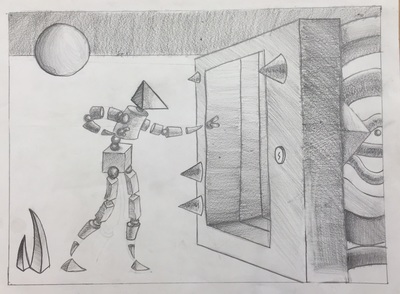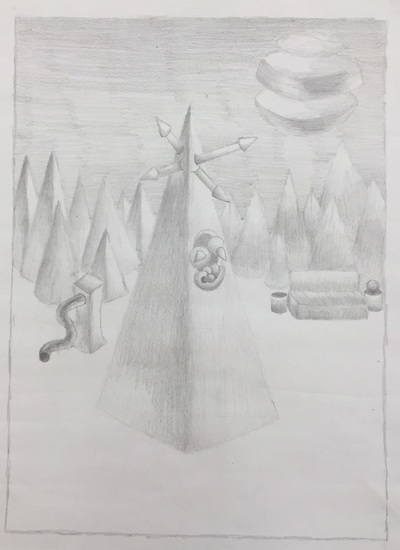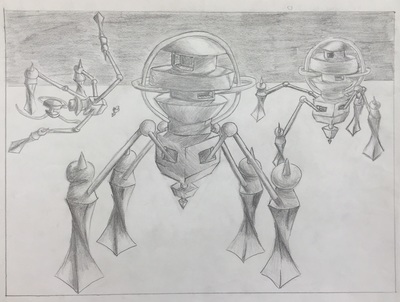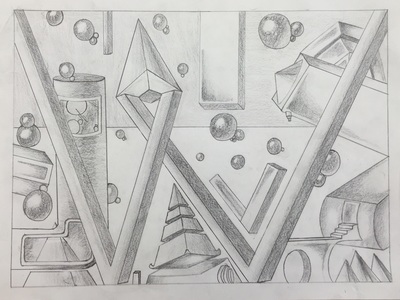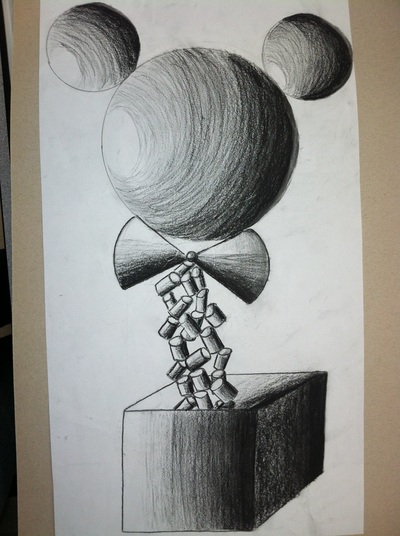ELEMENTS OF ART
Lesson 4: Form
|
|
PAGE 1:
-Objective, definition, characteristics. PAGE 2: (You may use 1/2 of PAGE 3 if needed) -Write the following vocabulary and definitions. You will find the information from the video. |
Thursday November 7-8, 2019
-Watch the form presentation and take notes. Include the following information in your notes:
-Watch the form presentation and take notes. Include the following information in your notes:
1.) Has length, width and depth: ______________________________
2.)List the 5 types of Form.
3.) _____________________________ is the light that reflects back from the surfaces that the forms are placed on or objects they
are next to. _____________________ is always located on a form’s shadow side.
4.) ___________________________ area on an object where light is hitting. Usually white in value depending on color or tone of
the object being drawn.
5.) _____________________________________________next value in a drawing after the light value area. Usually light to medium
values.
6.) _____________________________________ lightest part of a drawing next to the highlight.
7.) ____________________________A line drawn across a picture. The _______________________is always at a person’s eye level.
8.) ____________________________is the edge where the light is blocked from the light source. It is the darkest value on the
shadow side of a form. On round objects it blends into the middle tones from the shadow edge on.
9.) _____________________________ is a type of shadow that is created from a form onto a surface that is turned away from the
light source. Represented by having dark values or shades closer to the object and gradually changes in value to middle
values and tints.
10.) ____________________________ is the direction from which the light comes from.
11.) _____________________ areas on an object where light does not hit.
Review Vocab:
12.) __________________a process used in drawing for showing levels of darkness by applying media more heavily or with a
darker shade for darker areas, and less heavily or with a lighter shade for lighter areas.
13.) ______________the darkness or lightness of a color.
14.) ____________are light values.
15.) ______________ dark values.
2.)List the 5 types of Form.
3.) _____________________________ is the light that reflects back from the surfaces that the forms are placed on or objects they
are next to. _____________________ is always located on a form’s shadow side.
4.) ___________________________ area on an object where light is hitting. Usually white in value depending on color or tone of
the object being drawn.
5.) _____________________________________________next value in a drawing after the light value area. Usually light to medium
values.
6.) _____________________________________ lightest part of a drawing next to the highlight.
7.) ____________________________A line drawn across a picture. The _______________________is always at a person’s eye level.
8.) ____________________________is the edge where the light is blocked from the light source. It is the darkest value on the
shadow side of a form. On round objects it blends into the middle tones from the shadow edge on.
9.) _____________________________ is a type of shadow that is created from a form onto a surface that is turned away from the
light source. Represented by having dark values or shades closer to the object and gradually changes in value to middle
values and tints.
10.) ____________________________ is the direction from which the light comes from.
11.) _____________________ areas on an object where light does not hit.
Review Vocab:
12.) __________________a process used in drawing for showing levels of darkness by applying media more heavily or with a
darker shade for darker areas, and less heavily or with a lighter shade for lighter areas.
13.) ______________the darkness or lightness of a color.
14.) ____________are light values.
15.) ______________ dark values.
PAGE 3 & 4:
-Read the following information below and take notes.
-Read the following information below and take notes.
We can call this a GRADUAL SHADOW.
Watch the videos below. Take additional notes from the KQED arts video "Elements of Art: Form." The 5 videos on how to draw a sphere, cone, cylinder, pyramid and cube should be used as a guide and something to refer back to as the perfect the techniques in drawing the basic forms. A worksheet and class tutorial will be provided for drawing the 5 forms.
|
|
|
|
SPHERE
CYLINDER
CUBE
|
CONE
PYRAMID
|
manipulating forms
The following information will help guide and teach you the techniques on how to break down everyday objects into forms. By manipulating the 5 basic forms we can further break down objects to draw them more accurately. Look through the following 3 pages to understand the 6 manipulations: bending, stretching, smooshing, stacking, piercing, windows and cuts.
Practice all six manipulations using all 5 forms in any combination.
Practice all six manipulations using all 5 forms in any combination.
Project Directions:
Use the 5 forms and 6 manipulations to create an artwork. Shade all forms according to one light source (upper left or upper right).
Use the 5 forms and 6 manipulations to create an artwork. Shade all forms according to one light source (upper left or upper right).
DRAW THE HORIZON LINE:
LIGHTLY DRAW ALL THE FORMS USING THE 6 MANIPULATIONS:
USE COLOR PENCIL TECHNIQUES TO SHADE ALL THE FORM ACCORDING TO YOUR LIGHT SOURCE:
Project Examples
